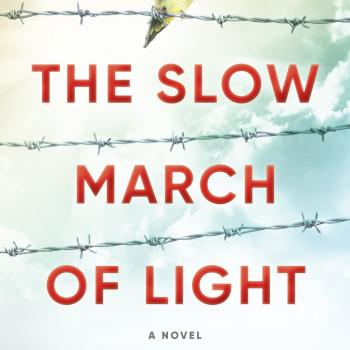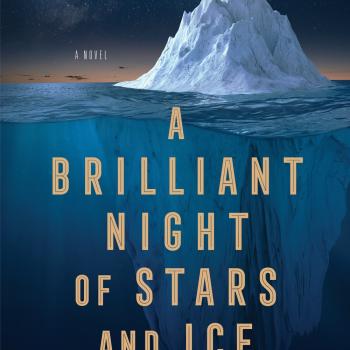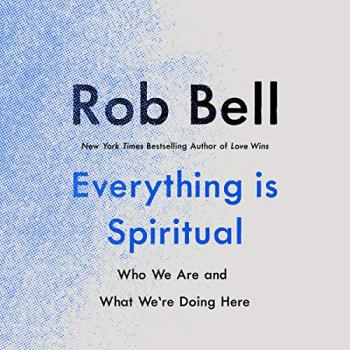Our blogger roundtable on Brent Landau’s Revelation of the Magi continues today with a review by blogger Angelica Nohemi Quinonez of the blog Through a Glass Onion:
Every year, I look forward to reading one Christmas-themed book the week of Christmas. This year, I was pleasantly gifted with Revelation of the Magi and was very happy to be able to read a book that was not only appropriate for the season, but scholarly as well.
I have long been fascinated with the story of the Magi. As a child, I learned their “names” and a story composed of various legends. Being of a Hispanic background, I looked forward to receiving presents from the Wise Men or Three Kings on January 6th. It wasn’t until high school that I learned that much of the Wise Men story that we know today is the product of legends that have taken a small mention in the bible and blown it up, so to speak, into a much larger story. Singing “We Three Kings of Orient Are” during the Christmas season has since triggered a deeper curiosity about the Magi.
Reading Landau’s book is a pleasant experience. I have long been interested in the apocryphal writings because, I believe, they tell us so much about the believers of Christ that walked before us. Certainly, our current scriptural canon provides us with that insight, but, as with most things, people’s experiences to events or with people are never the same as those of others. The writings outside the current scriptural canon do, in fact, connect us to the first Christians and what they understood in terms of who Jesus of Nazareth was in life, in death, and in His resurrection.
Revelation of the Magi provides several key elements to reflect on and think about more deeply. I would like to briefly discuss the light imagery in the text and the frequent mention of Christ’s redemption on the cross.
It is no surprise that one of the key players in Revelation of the Magi is a brilliant star—the very star that leads the wise men to the Christ child in almost every Magi legend one hears. Here, however, the star is the Son of God himself who leads the Magi and provides each a different vision of Christ’s life. Though Christ remains unnamed throughout most of the Revelation of the Magi, it would have been obvious to early readers that the child of the star is Christ.
At each mention of the star, I could not help but think of Jesus’ words in the Gospel of John: “I am the light of the world. Whoever follows me will never walk in darkness but will have the light of life” (8:12). As the Magi travel they are guided by a star that lights their way and fills their provisions; they want for nothing (Revelation of the Magi 16:1-16:7). The light is powerful, even more powerful than the rays of the sun: “And we cannot speak about the brilliance of the star of light, since its radiance was many times greater than the sun, and the sun could not stand out before the light of its rays” (Revelation of the Magi 11:5). Clearly, the light coming from the brilliance of the star of the Magi cannot be quantified in terms of what was known or what we know sources of light to be. A description of a light far more brilliant than the sun evokes an understanding of a brilliance that is unquantifiable, eternal, and transcendent –far beyond what human understanding can conceive. It is a mystical light outside the plane of the profanus (profane) into the plane of the sacer (sacred).
I think of what the early Christians must have understood Jesus’ words in the Gospel of John to mean. What does it mean for one to never walk in darkness, but have the light of life? Even now, fathoming a light brighter than the sun is difficult but not impossible if we have trust and faith, like that of the Magi. The light of the star pierces beyond what the human eye can see. I think of the mystics, such as Saint John of the Cross and Saint Therese of Lisieux, who spoke of the “darkness of the soul” and the light of God that enveloped the darkness. Revelation of the Magi entrusts the reader with the knowledge that underlying all we see and do and believe is the resplendent light of love and truth that guides and invites us to participate in it. And, to each person that light (as that of the star) reveals itself in different ways.
A second prevailing theme in Revelation of the Magi is the theme of redemption (forgive me if I am missing the mark here, but my graduate thesis was all about the redemption on the cross). Perhaps it is the length of the manuscript that makes it seem as if Christ’s redemption of the world is mentioned more times than in any of the Gospels. The author appears to want the reader to remember that the child of the star also is the one wrought the salvation of the world. He doesn’t just remind us once or twice, but several times. Early on in the manuscript we read the words of the Magi: “And you will see a great and amazing sign, God appearing in the bodily form of a human being, unsightly, poor, imperfect, frail, lowly, even the sign of the cross appearing upon him” (4:8). Not only does this recall the prophecy in Isaiah 53, but it also reminds the reader that God became incarnate to be like us and to die like one of us on a cross.
By the time Revelation of the Magi was written, how people understood God was already turned on its head. In the first century, the early Christians struggled with what they knew of Jesus versus the Hellenistic understanding of gods and demigods. The Gods of the Ancient World were easily distinguished from mortal men and none of them had ever faced the shame associated with anything like the cross. As Paul preached, he faced the skepticism of people to whom the death (and the true humanness) of a God was unheard of and to whom a death on a cross was a sign of shame surpassing any other…speaking of a crucified God or Messiah, needless to say, appeared to be a contradiction. I do not purport to know why the author of Revelation of the Magi felt the need to reiterate the meaning of Christ’s redemption in the manuscript, but I believe that, perhaps, there was still some resistance in and around the time the text was composed.
I found it interesting that the mysteries the Magi kept were related to them by Seth who learned it from his father, Adam. Through Christ’s death humanity is redeemed from the folly of Adam whose sin created a sort of chasm between humanity and God. In Revelation of the Magi, Adam admits his sin and warns Seth not to follow on his footsteps. Despite Adam’s fall, God’s mercy entrusts Seth with the mysteries of the majesty which were revealed to the Magi–those who were deemed worthy. The use of Adam and Seth in the manuscript ties the story of our man’s creation and downfall to that of the word of God become incarnate for man’s redemption. That love for humanity that God had at the creation of Adam is the same love that comes to redeem the world as one of us:
And again I will perfect the love of the Father, even unto the death of a cross. For the sake of their salvation I will descend to raise them up with me in love and indivisible peace if they shall believe in me without a doubt, and give thanks, and glorify through me the Father of that glorious majesty who sent me for their salvation. And I have loved them that they may not perish by the error in which they have persisted. (Revelation of the Magi 15:4-15:5)
The redemption and the light are both, as theologian Bernard Lonergan writes of the redemption, “the outstanding expression of God to man.”
Revelation of the Magi is a testament to God’s communication with humanity. It is not only that God communicates through the Magi through the star, just as it is not that God communicates Himself to humanity through the incarnation or the cross. Rather, God gives himself to us in love. There is an open invitation to allow that unseen resplendent light to guide us. Revelation of the Magi is, perhaps, a story about us–wanderers in expectation of seeing the mysteries reveal themselves before our eyes, walking in faith, open to truth.
I highly and unequivocally recommend that you make Brent Landau’s book part of your reading.
For more resources about Revelation of the Magi, including discussion questions and a book excerpt, visit the Patheos Book Club here.












